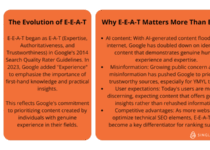Google is removing 4 attribution models from ads and analytics
Google is removing 4 attribution models from ads and analytics
Google has announced that it will be making major changes to its attribution models for advertisers starting in May 2023.
Four attribution models, namely
1. First click.
2. Linear.
3. Time decay
4. Position-based.
will be removed from Google Ads and Google Analytics.
Less than 3% of conversion actions on Google Ads, says Google, use outdated models, while automated bidding conversions are most frequently attributed to the data-driven attribution model. Removing less widely used attribution models will lead to consolidation and measurement clarity.
People who use one of the four attribution models which have been discontinued should be prepared to take action instantly.
Time decay, linear, initial click, and position-based models for Google Analytics 4 attributes will no longer be available for any fresh conversion actions beginning in May 2023.
For Google Ads accounts, the same models will be unavailable starting June 2023. Google will sunset the four attribution models in both Google Ads and Google Analytics 4 by September 2023.
Marketers have the option of choosing the current version of the “last click” attribution model, however, they have Ie to manually adjust it for each conversion action. Existing conversion activities that employ these models will automatically switch to the data-driven attribution (DDA) model.
As a marketer, it’s essential to start or continue the attribution conversation internally to better understand how the change in attribution models affects campaign performance before switching. The Model Comparison tool can be used to detect fundamental measurement changes that can be utilized to encourage modifications in strategy.
Things to Know
- NPR has said it will no longer post fresh content on Twitter after the social media platform labeled the news outlet as “government-funded media”. NPR says this is both misleading and inaccurate given that it is a private, non-profit company with editorial independence, receiving less than 1% of its $300m annual budget from the federally-funded Corporation for Public Broadcasting. Elon Musk, who owns Twitter, initially labeled NPR as “state-affiliated media”, but later changed this to “government-funded media”.
- Grammarly, the popular writing assistant, is introducing a new feature called GrammarlyGO, which uses generative AI to personalize text suggestions based on voice, style, and purpose. Unlike other chatbots, GrammarlyGO uses unique text context and offers a voice selection option, suggestion prompts, and brainstorming capabilities. The aim is to increase productivity and optimize the quality of writing for individuals such as professionals, educators, and students. GrammarlyGO is accessible through the Grammarly app, and the beta version is expected to launch in April.
This post was originally published on The Digi Learners.
To get content like making money online+latest tech news+ marketing strategies+online business growth join our free newsletter here


